PicPicAI is a comprehensive online platform offering a variety of AI-powered image editing tools. It provides users with 20 free credits upon registration, allowing them to explore and utilize various features. The platform caters to both beginners and professionals, offering easy-to-use tools for enhancing photos, removing backgrounds, generating portraits, and more.
AI Image Tools for Free Online | PicPicAI
- Remove Background
- Photo Enhancer
- Photo Upscaler
- Change Background Color
- Restore Old Photos
- Colorize Photos
- Compress Photos
- Photo Retouch
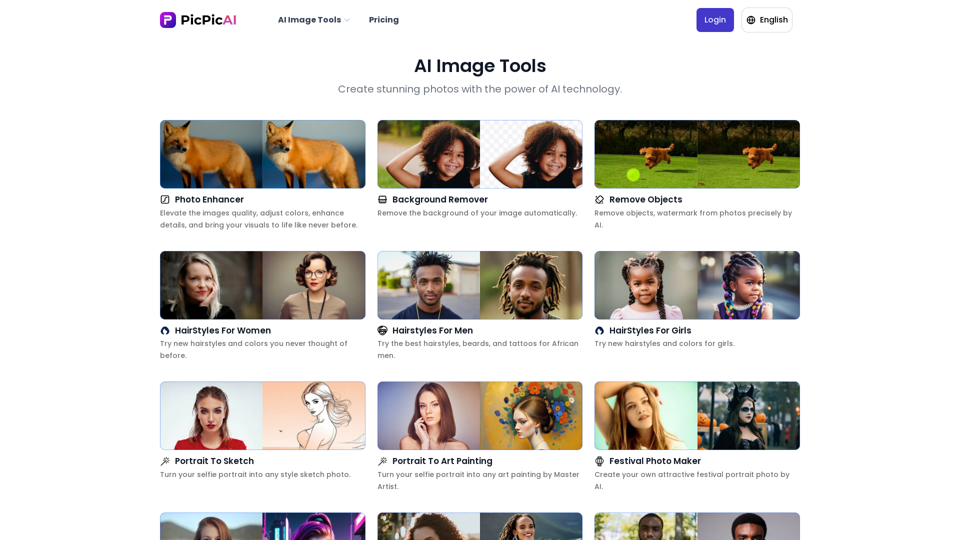
Introduction
Feature
AI Image Editor
- Create stunning AI art
- Change background color
- Remove objects from images
- Compress photos for optimal file size
AI Portrait Generator
- Generate various hairstyles for women
- Create neonpunk-style portraits
- Convert portraits to sketches
- Cartoonify portraits
- Generate professional headshots
- Restore old photos
- Enhance photo quality
- Colorize black and white photos
- AI-powered portrait enhancement
- Upscale photos for higher resolution
Photo Enhancement Tools
- Photo Enhancer: Improve image quality, adjust colors, and enhance details
- Background Remover: Automatically remove image backgrounds
- Object Removal: Precisely remove unwanted objects or watermarks from photos
- Hairstyle Generator: Experiment with new hairstyles and colors
- Portrait to Sketch Converter: Transform selfies into stylized sketch photos
- Portrait Cartoonifier: Convert portrait photos into cartoon-style images
User-Friendly Interface
- Intuitive design suitable for both beginners and professionals
- No learning curve required for using the tools
Cost-Effective Solution
- Affordable pricing for a wide range of image editing tools
- Efficient processing for quick results
FAQ
Who can benefit from PicPicAI's tools?
PicPicAI's tools are beneficial for a wide range of users, including social media managers, marketers, content creators, and individuals looking to enhance their personal photos. These AI-powered tools can transform the way users create visuals for both business and personal use, helping to create stunning images, save time, and streamline the creative process.
How do I use PicPicAI's photo tools?
Using PicPicAI's photo tools is simple:
- Navigate to the desired photo tool page
- Upload your image
- Let the AI process and enhance your photo automatically
What makes PicPicAI stand out from other image editing platforms?
PicPicAI distinguishes itself through:
- Comprehensive toolset: Offering a wide range of AI-powered image editing tools in one platform
- User-friendly interface: Easy-to-use design suitable for all skill levels
- Affordability: Cost-effective solution for professional-quality image editing
- Efficiency: Quick processing and convenient user experience
Latest Traffic Insights
Monthly Visits
15.66 K
Bounce Rate
34.80%
Pages Per Visit
2.07
Time on Site(s)
28.68
Global Rank
1557619
Country Rank
Russia 115425
Recent Visits
Traffic Sources
- Social Media:2.51%
- Paid Referrals:0.53%
- Email:0.17%
- Referrals:10.52%
- Search Engines:49.46%
- Direct:36.68%
Related Websites

Vidviz GPT: AI for YouTube Vidviz GPT is an AI-powered tool designed to help you create amazing YouTube videos.
Vidviz GPT: AI for YouTube Vidviz GPT is an AI-powered tool designed to help you create amazing YouTube videos.Vidviz GPT: ChatGPT for YouTube. Chat, Summarize, Question Videos Seamlessly. Extract Visual Information and Empower Your Learning.
193.90 M
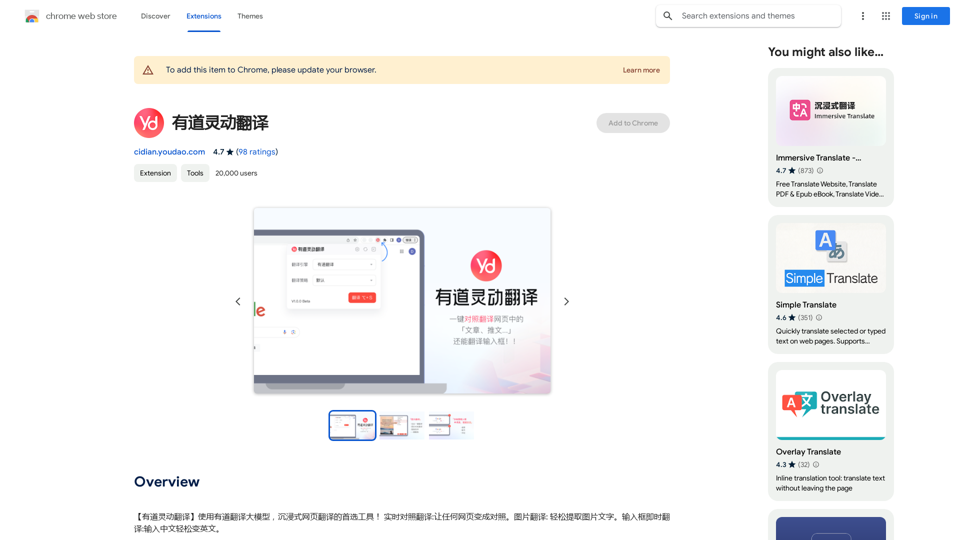
【Youdao Lingdong Translation】Using Youdao's large translation model, the top choice for immersive web translation tools! Real-time contrast translation: Turn any web page into a contrast. Image translation: Easily extract text from images. Instant translation input box: Enter Chinese and easily convert to English.
193.90 M
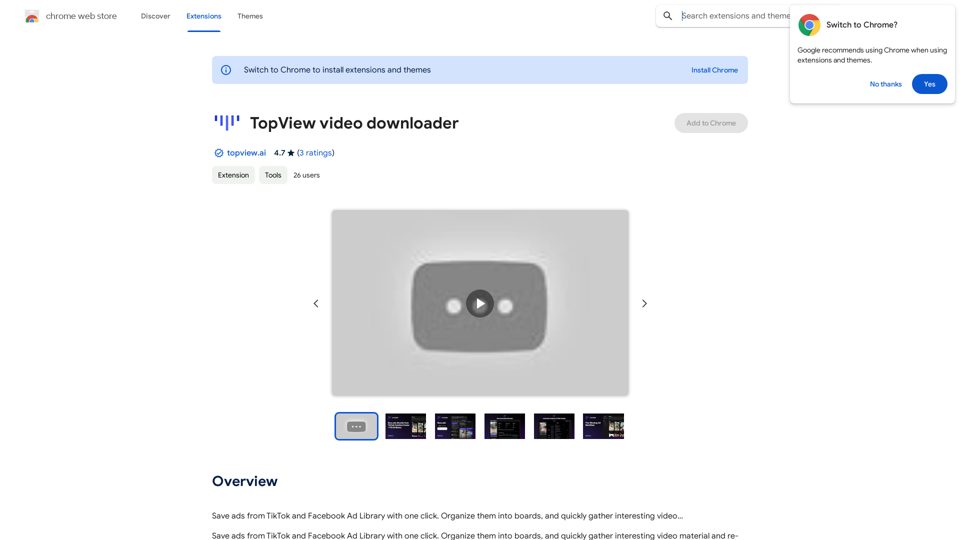
Save ads from TikTok and Facebook Ad Library with one click. Organize them into boards, and quickly gather interesting videos.
193.90 M
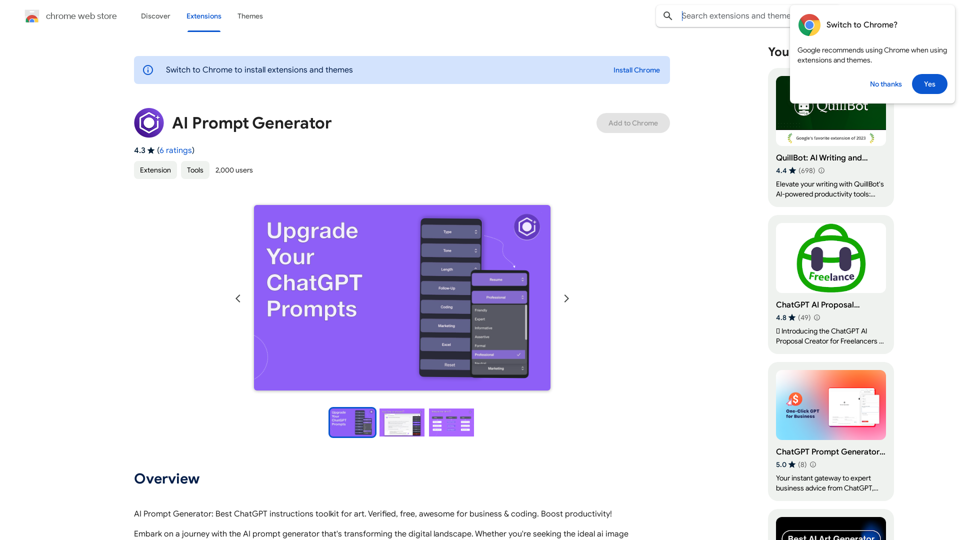
AI Prompt Generator: The Ultimate ChatGPT Instructions Toolkit for Art Verified, free, and awesome for business and coding. This toolkit is designed to boost your productivity!
193.90 M
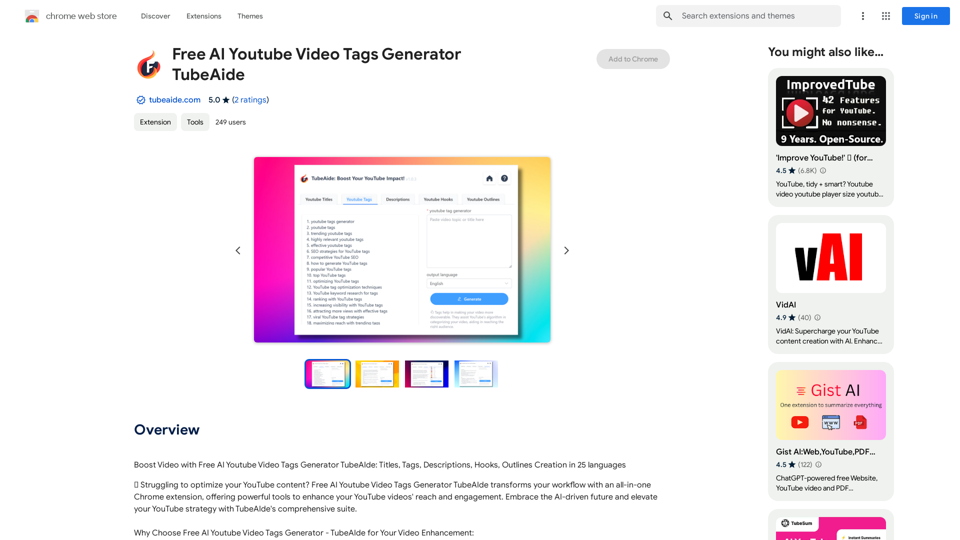
Boost Your Video with Free AI YouTube Video Tag Generator TubeAIde: Titles, Tags, Descriptions, Hooks, and Outlines in 25 Languages
193.90 M
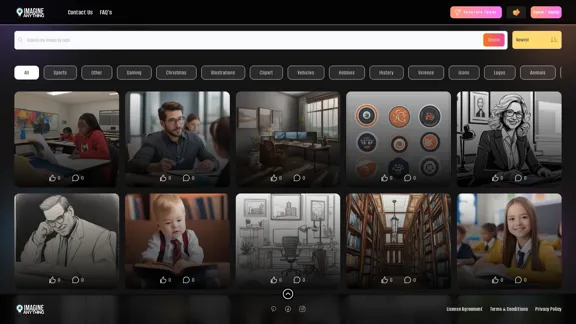
Generate Free AI Images with Imagine Anything. Easily create Photos, Clipart, Graphics and more with our AI Generator.
56.84 K
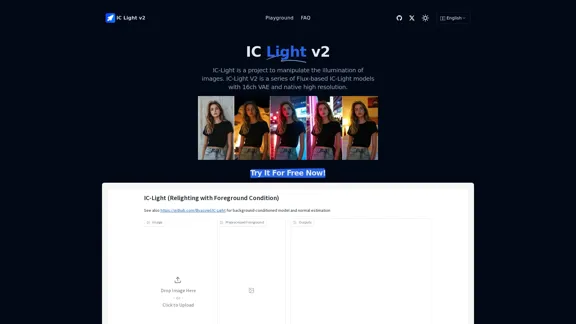
IC-Light is a project to manipulate the illumination of images. IC-Light V2 is a series of Flux-based IC-Light models with 16ch VAE and native high resolution.
0
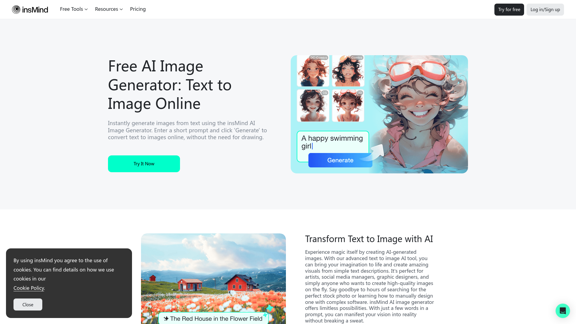
100% Free AI Image Generator: Text to Image Online | insMind
100% Free AI Image Generator: Text to Image Online | insMindLooking for a free AI image generator from text? Create stunning images with a simple text prompt using the most advanced AI text-to-image generator.
1.77 M